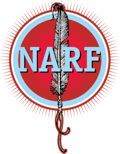Answers to Frequently Asked Questions about Native Peoples
Who is a Native American?
As a general principle an Indian is a person who is of some degree Indian blood and is recognized as an Indian by a tribe/village and/or the United States. There exists no universally accepted rule for establishing a person’s identity as an Indian. The criteria for tribal membership differs from one tribe to the next. To determine a particular tribe’s criteria, one must contact that tribe directly. For its own purposes, the Bureau of the Census counts anyone an Indian who declares to be such. By recent counts, there are more than 2.9 million Native Americans, including Native Alaskans and Native Hawaiians.
Why are Indians sometimes referred to as Native Americans?
When referring to American Indians or Alaska Natives, it is appropriate to use the terms American Indians and Alaska Natives. These terms denote the cultural distinction between the indigenous people of the continental United States and those of Alaska. While the term “Native Americans” came into usage in the 1960s out of respect to American Indians and Alaska Natives, usage of the term has expanded to include all Native people of the United States and its territories, including Native Hawaiians and American Samoans.
What is an Indian Tribe?
An Indian tribe was originally a body of people bound together by blood ties who were socially, politically, and religiously organized, who lived together in a defined territory and who spoke a common language or dialect. In the eyes of the US government a body of people as described above must be officially recognized in order to be considered a tribe.
What does the term “federally recognized” mean?
Only tribes who maintain a legal relationship to the US government through binding treaties, acts of Congress, executive orders, etc., are officially “recognized” by the federal government. Once “recognized” a tribe has a legal relationship with the United States. There are currently more than 550 federally recognized tribes in the United States, including some 200 village groups in Alaska. However, there are still hundreds of tribes undergoing the lengthy and tedious process of applying for federal recognition. Read more about NARF’s work on preservation of tribal existence>>
What does “tribal sovereignty” mean and why is it so important to Native Americans?
Tribal sovereignty describes the right of federally recognized tribes to govern themselves, their lands, and their people. It also includes the existence of a government-to-government relationship with the United States. A tribe is not a ward of the government, but an independent nation with the right to form its own government, adjudicate legal cases within its borders, levy taxes within its borders, establish its membership, and decide its own future fate. The federal government has a trust responsibility to protect tribal lands, assets, resources and treaty rights. Read more about NARF’s work on tribal sovereignty and jurisdiction>>
What is a reservation?
In the US, there are only two kinds of reserved lands that are well-known—military and Indian. An Indian reservation is a land base that a tribe reserved for itself when it relinquished its other land areas to the US through treaties. More recently, Congressional acts, executive orders, and administrative acts have created reservations. Today, some reservations include non-Indian residents and land owners. Read more about NARF’s work on the protection of tribal lands>>
Are Indians US citizens?
Not until 1924 were all Native Americans granted citizenship. Before this juncture only individuals who were members of federally recognized tribes and “naturalized” individuals were given the rights of a United States citizen. Presently all Native Americans born within the territorial limits of the United States are by law citizens. Native Americans have had the privilege of voting in national elections since 1924; however, until recently some states prohibited Native Americans from voting in local elections. New Mexico, for example, did not extend the vote to Native Americans until 1962. Most native people, of course, also are members of their respective sovereign tribes.
Are Native Americans exempt from military service?
Native Americans, despite tribal sovereignty, have the same obligations for military service as all other US citizens.
Do Indians pay taxes?
All Indians are subject to federal income taxes. As sovereign entities, tribal governments have the power to levy taxes on reservation lands. Some tribes do and some don’t. As a result, Indians and non-Indians may or may not pay sales taxes on goods and services purchased on the reservation depending on the tribe. However, whenever a member of an Indian tribe conducts business off the reservation, that person, like everyone else, pays both state and local taxes. State income taxes are not paid on reservation or trust lands.
Do Native Americans receive any special rights or benefits from the US government?
Contrary to popular belief, Indians do not receive payments from the federal government simply because they have Indian blood. Funds distributed to a person of Indian descent may represent mineral lease income on property that is held in trust by the United States or compensation for lands taken in connection with governmental projects. Some Indian tribes receive benefits from the federal government in fulfillment of treaty obligations or for the extraction of tribal natural resources — a percentage of which may be distributed as per capita among the tribe’s membership. Read about NARF’s work on trust fund matters>>
What does all this mean?
Tribes deserve to be sovereign entities imbued with the authority of self-determination on their own land. For a healthy government-to-government relationship to exist the US government needs to respect the binding agreements spelled out in their own treaties. All Native Americans should demand nothing less than what the US government has promised them. That is why we at NARF, having sworn to preserve and protect the rights of all Native Peoples, take the battles to the courts.
Adapted from the United States Department of the Interior Bureau of Indian Affairs’ publication American Indians Today: Answers to Your Questions, Third Edition, 1991.


